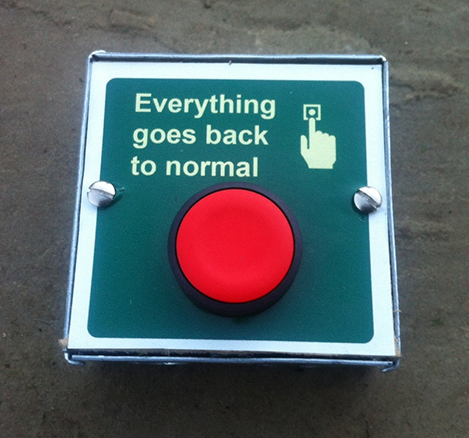According to the General Manager via invited comments today Friday, September 27, 2019, everything is now back to normal, as all problems were speedily repaired. 'The problems experienced are typical for any electric utility following inclement weather such as what we experienced with the passage of TS Karen,' he told Virgin Islands News Online. Everything Will Go Back To Normal Now! December 4, 2020 Denise Dream on deluded, self-deluded, unaware and misinformed people. Nothing will ‘go back to normal’ now or in 2021 or in March 2021 or in 2022 or ever. Update at 2:05 p.m.: The city's aviation director says Oncor's now at Dallas Love Field, where power's been holding strong and steady for the last hour. 'Everything's back to normal,' says Mark.

- Just because a coronavirus vaccine is developed and distributed, that doesn’t mean the COVID-19 pandemic is going to come to an immediate end.
- Two things have to also be true for any coronavirus vaccine: It has to be effective enough, and enough of the population has to actually take the vaccine.
- That last part is a little worrisome, however, since an alarming number of Americans have already said they have no intention of taking a coronavirus vaccine once it arrives.
The US is reportedly gearing up for a major messaging and educational effort to support the imminent arrival of a coronavirus vaccine, with that communications initiative being regarded as just as important a component of the overall effort to bring a vaccine to fruition as the science and logistical challenges that are also part of the mix. As The Wall Street Journal reported on Friday, such a messaging effort will be designed to communicate to Americans that any such vaccine is safe and effective — a not-insignificant communications hurdle to overcome, believe it or not, since a worrisome number of Americans have already made clear that they have no intention of letting themselves be vaccinated.
All that said, it will become increasingly important that we calibrate our expectations around a vaccine correctly, the closer we get to the point when one is finally ready to be administered to the general population. That’s because, in and of itself, the arrival of a vaccine won’t bring an end to the coronavirus pandemic. There are actually two other important realities that have to accompany the arrival of a vaccine for it to have a chance of working to the degree that we all want it to — and helping us all get our lives somewhat back to normal.
First, the coronavirus vaccine has to be good enough. That is, it has to be effective on a large percentage of the population, which leads to the second thing — enough of you also have to actually get the vaccine.
Per CNBC, a computational model prepared by researchers studying this exact issue found that if 75% of the population gets a coronavirus vaccine, it would need to be at least 80% effective to end the pandemic without any other measures needed to complement the vaccine (such as continued social distancing). The level of effectiveness might not get that high, however, especially considering that the annual flu vaccine generally only reduces the risk of contracting the flu by between 40% and 60%, according to the CDC. Likewise, White House health advisor Dr. Anthony Fauci has said that while the hope is that a vaccine would be at least 75% effective, the Food and Drug Administration is already planning to authorize a vaccine even if one is only 50% effective or higher.

In recent days, an FDA official — Peter Marks, director of the FDA’s Center for Biologics Evaluation and Research — confirmed to Reuters that he has vowed to resign from his post if the Trump administration tries to push through a vaccine before health experts believe it to be safe and effective. So that should give people the confidence needed for enough of us to feel comfortable taking the vaccine. Likewise, the research model referenced above goes on to show that if only half of a population gets vaccinated, if you also assume that each person with coronavirus infects 2.5 others and the vaccine is only 60% effective, it could still cut the number of infections by 75%.


Update: Everything Back To Normal Range
“All of this doesn’t mean that a vaccine with a lower efficacy would not be useful,” study author Dr. Bruce Y. Lee stressed in a piece he wrote for The Conversation last month. “It would mean that social distancing and mask-wearing likely would have to continue until the pandemic runs its course or a vaccine that is actually ‘good enough’ arrives.”
